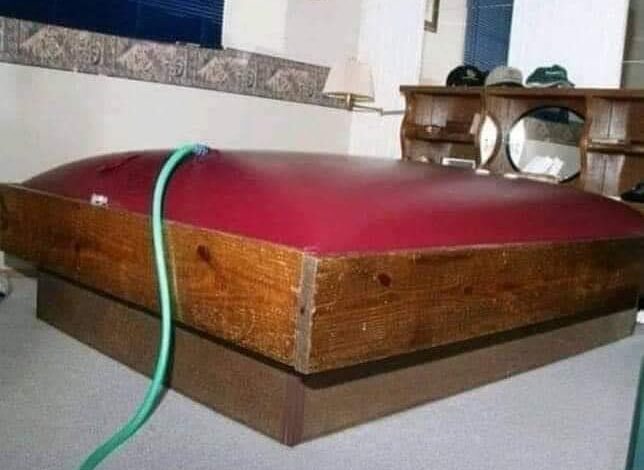The Rise and Fall of the Waterbed: A Cultural Icon of Comfort and Extravagance

ADVERTISEMENT
The Rise and Fall of the Waterbed: A Cultural Icon of Comfort and Extravagance
Introduction
In the 1970s and 1980s, the waterbed became a symbol of luxury and modernity, a must-have item for those looking to combine comfort with a touch of eccentricity. With its promise of an unparalleled sleeping experience, the waterbed was once a booming industry. However, over the years, its popularity has waned, leaving it as a nostalgic relic of a bygone era. This article explores the history, allure, and eventual decline of the waterbed, and its lasting impact on our perceptions of sleep and comfort.
The Birth of the Waterbed
ADVERTISEMENT
The concept of the waterbed can be traced back to the 19th century, but it wasn’t until 1968 that the modern waterbed was invented by Charles Hall, a design student at San Francisco State University. Originally designed as a project to improve furniture comfort, Hall’s creation quickly gained attention for its unique feel and ability to conform to the body, offering a sensation that standard mattresses could not replicate.
A Cultural Phenomenon
Throughout the 1970s and 1980s, waterbeds became a cultural phenomenon. They were marketed as the ultimate sleep experience, with slogans like “the wave of the future.” Waterbeds were not just about comfort; they were a statement piece. They appeared in movies, music videos, and were often associated with a lifestyle of luxury, free love, and modernity. The image of a waterbed in a well-appointed bedroom was synonymous with success and style.
The Allure of the Waterbed
The appeal of the waterbed lay in its novelty and the sensory experience it provided. The bed’s ability to mold to the sleeper’s body, its gentle rocking motion, and the potential for temperature control made it a desirable option for many. It was also believed to be beneficial for people with certain medical conditions, such as back pain, because it provided support without pressure points.
ADVERTISEMENT
The Practical Challenges
Despite its popularity, the waterbed came with a host of practical challenges. It was heavy, requiring reinforced floors in some cases, and filling or draining the bed was a cumbersome task that required special tools, such as the hose seen in the image. The beds were prone to leaks, which could cause significant damage to both the bed and the surrounding area. Additionally, the beds required regular maintenance, including the addition of water conditioners to prevent the growth of algae.
The Decline of the Waterbed
By the late 1980s and early 1990s, the waterbed’s popularity began to decline. Advances in mattress technology, such as memory foam and innerspring hybrids, offered similar levels of comfort without the drawbacks associated with waterbeds. The novelty of the waterbed wore off, and its impracticality became more apparent to consumers. Additionally, societal trends shifted towards minimalism, and the bulky, high-maintenance waterbed no longer fit the aesthetic or lifestyle preferences of the masses.
The Legacy of the Waterbed
ADVERTISEMENT
Today, the waterbed is a nostalgic relic, remembered fondly by those who experienced its heyday. While it no longer holds the cultural significance it once did, the waterbed left a lasting impact on the mattress industry. It pushed the boundaries of what a bed could be, inspiring innovation and challenging traditional notions of sleep comfort. For some, the waterbed remains a cherished piece of their personal history, a reminder of an era when comfort was king, and the bedroom was a place of both rest and entertainment.
Conclusion
The waterbed may have faded from the mainstream, but its influence on the world of sleep and comfort endures. It represents a time when consumers were eager to embrace new ideas and technologies, even in the most personal spaces of their lives. While it may no longer be the “wave of the future,” the waterbed’s unique place in history is undeniable, and its legacy continues to ripple through the world of modern bedding.




